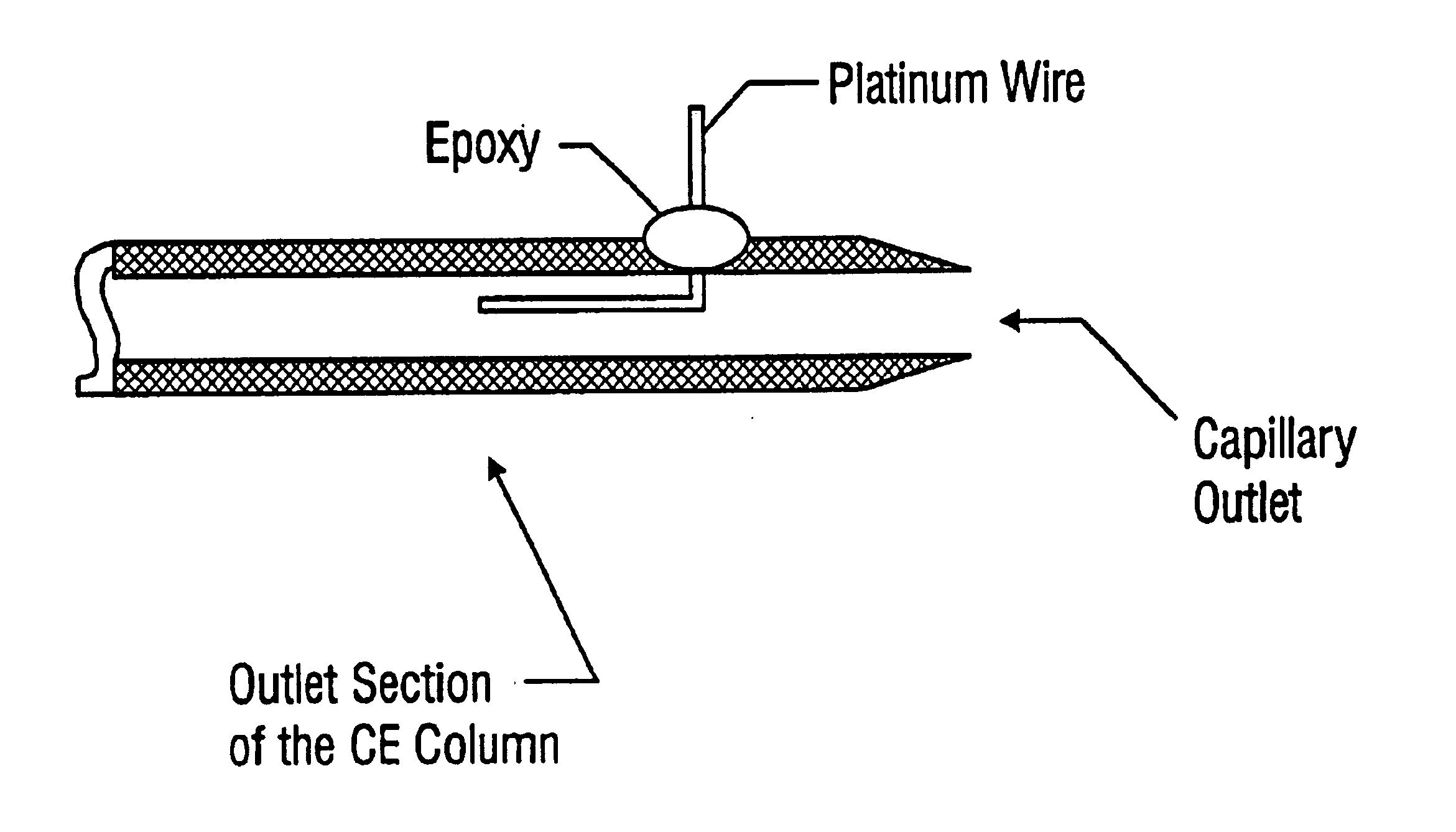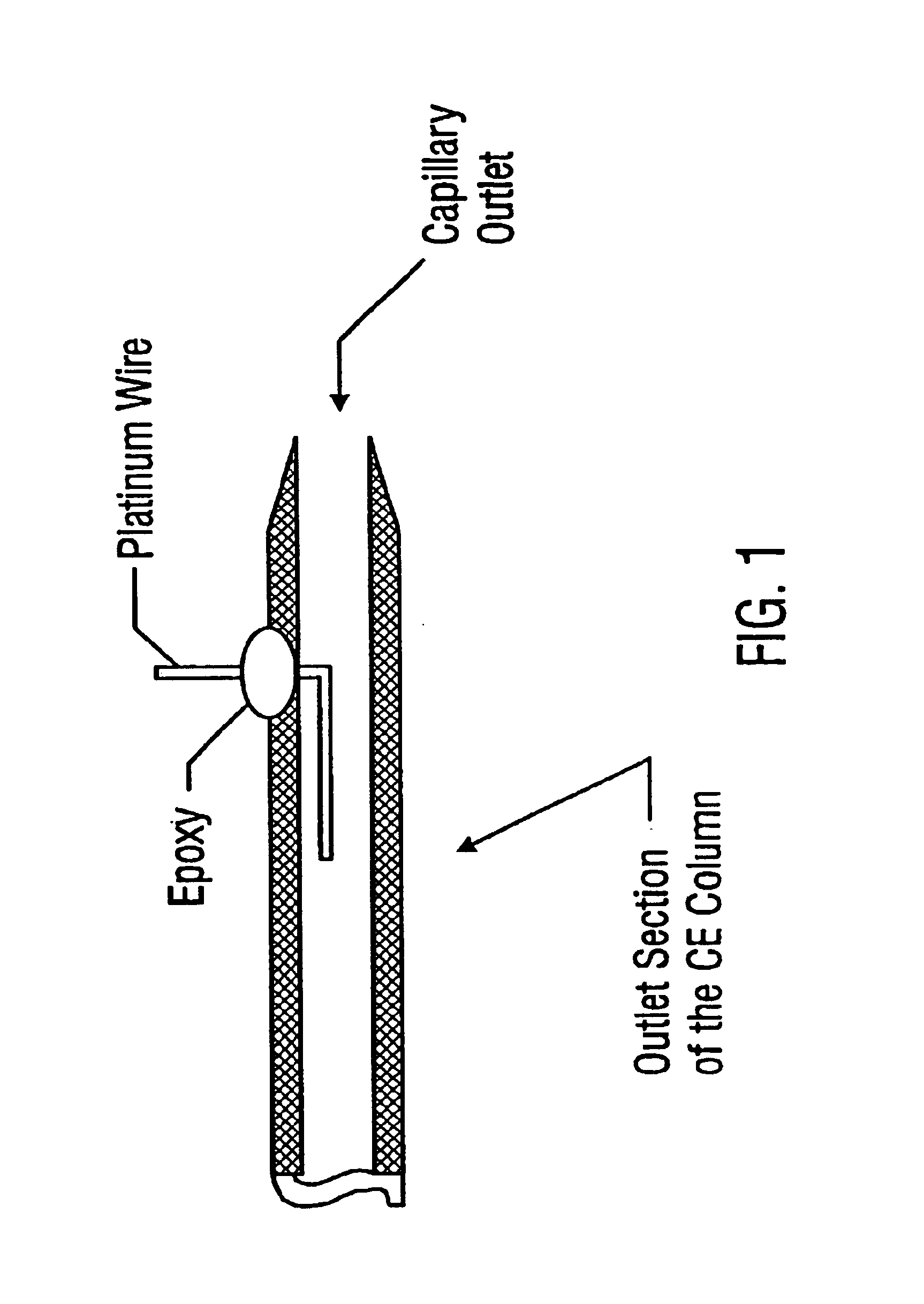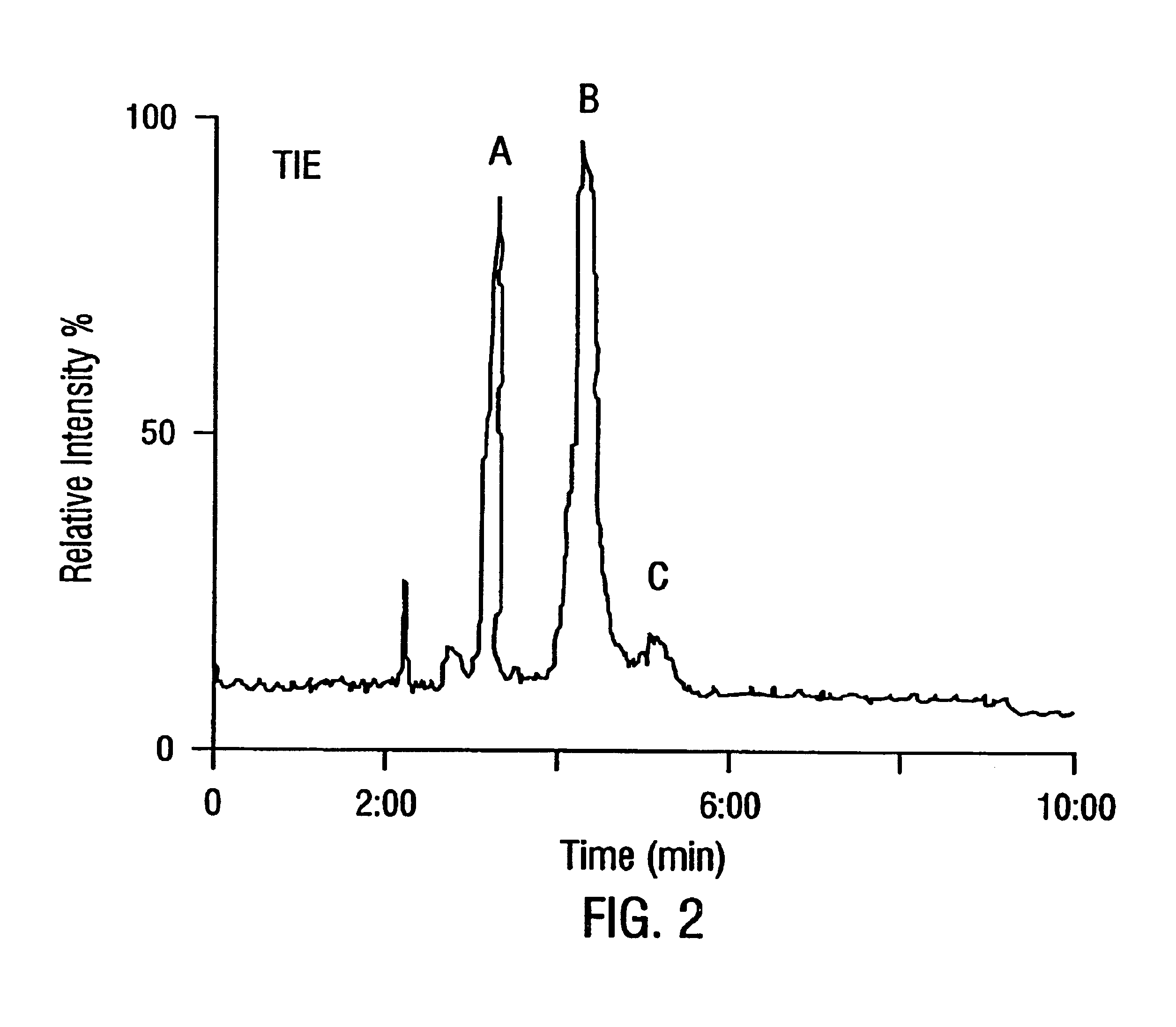Sheathless interface for capillary electrophoresis/electrospray ionization-mass spectrometry using an in-capillary electrode
a mass spectrometry and electrode technology, applied in the direction of fluid pressure measurement, liquid/fluent solid measurement, peptide measurement, etc., can solve the problems of limited use and currently used interfaces that do not allow routine analysis
- Summary
- Abstract
- Description
- Claims
- Application Information
AI Technical Summary
Benefits of technology
Problems solved by technology
Method used
Image
Examples
example 1
5.1 Example 1
Materials and Methods
In a first reduction to practice of the present invention, CE capillary columns were prepared from 75 .mu.m-i.d., 150 .mu.m-o.d. capillary columns (Polymicro Technology, Phoenix, Ariz.). A microscope (0.7 to 4.2.times.) (AO Instrument Company, Buffalo, N.Y.) was used for construction of the capillary. The fabrication procedure was as follows.
A 50 .mu.m-diameter platinum (Pt) wire (Goodfellow, Berwyn, Pa.) was inserted approximately 4 cm inside one end of the CE column, hereafter called the CE outlet (as opposed to the inlet). Using a 2.22 cm-diameter abrasive disk (Small Parts Inc., Miami Lakes, Fla.) attached to a drill (DREMEL, Racine, Wis.), a small opening was made into the wall of the column approximately 2 cm from the CE outlet. Preliminary data indicated no noticeable difference in results when the hole was made in the range of 1.5-2.5 cm from the CE outlet. The 50 .mu.m-diameter Pt wire prevented the capillary from breaking during the cuttin...
example 2
5.2 Example 2
Stability of Contact at CE Terminus
The stability and reliability of the electrical contact at the CE terminus is an important aspect for successful electrophoresis. With the inventors' design, electrical contact is reliably maintained by placing the electrode inside the CE capillary through a small hole in the capillary wall near the terminus. This electrode acts both as the low voltage electrode of the CE electric circuit and as a connection for the electrospray ionization voltage.
The stability of the CE current was tested for the in-capillary electrode CE / ESI-MS sheathless interface utilizing the column and parameters established above for small peptide analysis. The CE current was stable at 2.5 .mu.A .+-.0.25 .mu.A for 50 minutes (maximum time studied).
Unlike other sheathless interfaces in which the CE capillary tip either is gold coated or has a wire that is inserted into the outlet of the CE capillary, with the inventors' in-capillary electrode design, stable CE an...
example 3
5.3 Example 3
Performance Evaluation
To evaluate the overall performance of the sheathless in-capillary electrode electrospray interface design, a mixture containing three dipeptides (Val Asp, PheVal, LeuPhe) and one eight residue peptide, ValHisLeuThrProValGluLys (0.1 mg / mL each peptide) was electrokinetically injected into the capillary using -5.0 kV potential difference across the capillary with a duration of 5 seconds. All compounds were resolved and detected in less than four minutes. The mass spectra of each peak of the electropherogram showed a protonated molecule as the base peak for the dipeptides and the doubly charged ion as the base peak for the eight residue peptide.
For this experiment, the mass spectrometer was operated under a wide scan mode (180-480 mass-to-charge (m / z), 1 sec / scan).
The utility of this design for protein and peptide analysis was demonstrated by analysis of a mixture containing 0.25 mg / mL myoglobin (MW=16,951 Dalton (Da)), cytochrome c (MW=12,360 Da), a...
PUM
| Property | Measurement | Unit |
|---|---|---|
| pressure | aaaaa | aaaaa |
| pressure | aaaaa | aaaaa |
| pressure | aaaaa | aaaaa |
Abstract
Description
Claims
Application Information
 Login to View More
Login to View More - R&D
- Intellectual Property
- Life Sciences
- Materials
- Tech Scout
- Unparalleled Data Quality
- Higher Quality Content
- 60% Fewer Hallucinations
Browse by: Latest US Patents, China's latest patents, Technical Efficacy Thesaurus, Application Domain, Technology Topic, Popular Technical Reports.
© 2025 PatSnap. All rights reserved.Legal|Privacy policy|Modern Slavery Act Transparency Statement|Sitemap|About US| Contact US: help@patsnap.com



